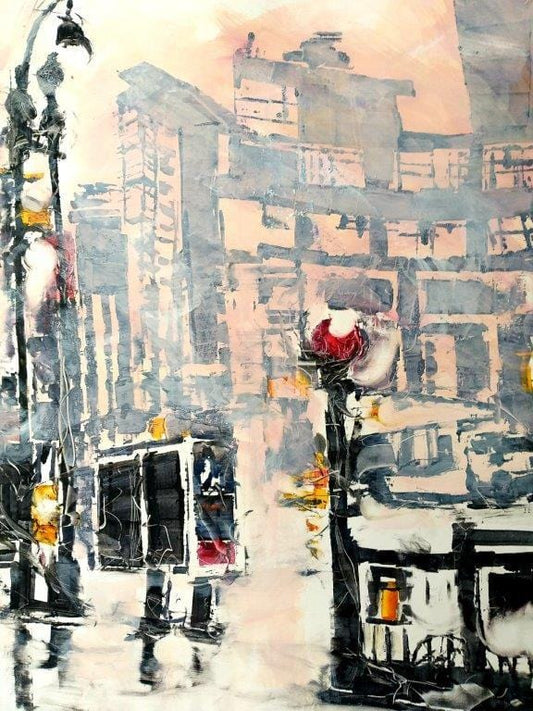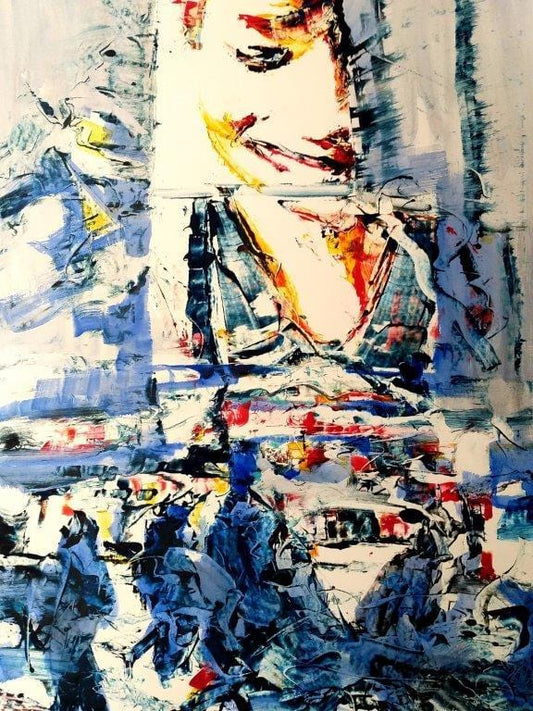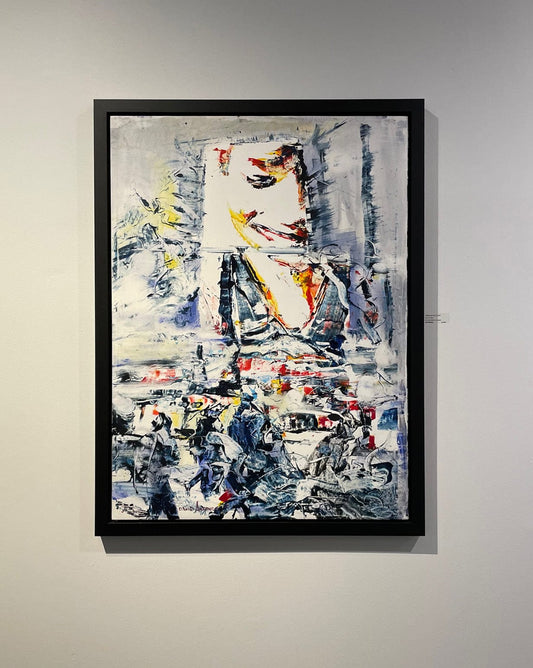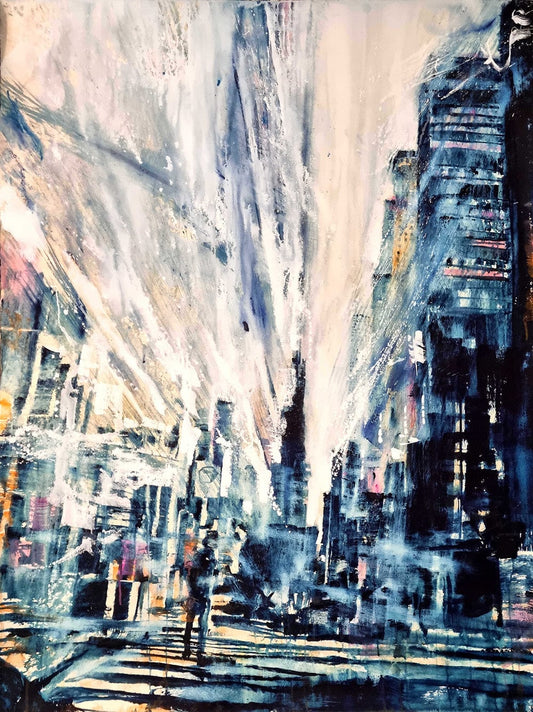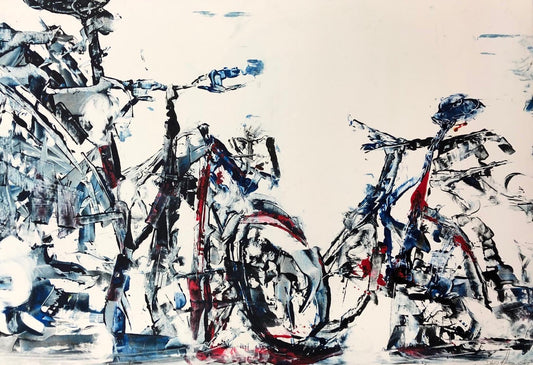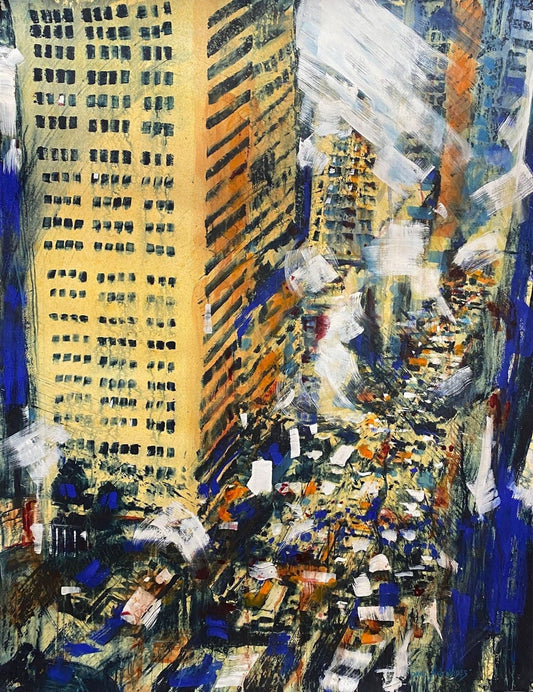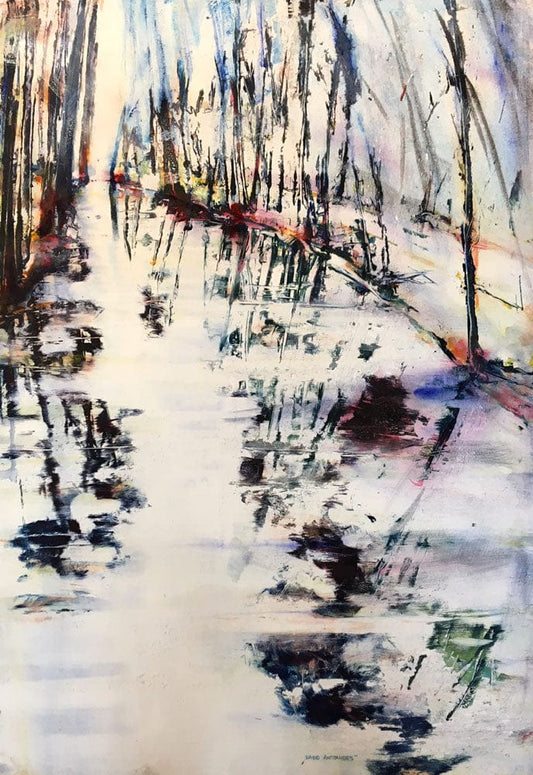David Antonides
-
To the Trains 1317P, framed
Vendor:David AntonidesRegular price $3,200.00 CADRegular priceUnit price / per -
Billboards NYC 1318P, framed
Vendor:David AntonidesRegular price $3,950.00 CADRegular priceUnit price / per -
The Sun Also Rises
Vendor:David AntonidesRegular price $5,850.00 CADRegular priceUnit price / per -
Cyclic 2 1362P
Vendor:David AntonidesRegular price $2,800.00 CADRegular priceUnit price / per -
Werbellinerkanal 1288P
Vendor:David AntonidesRegular price $3,200.00 CADRegular priceUnit price / per
-
David Antonides
-
Born in Whitehorse, Yukon in 1958, David Antonides studied art formally in Vancouver, New York, and Europe. A life-long traveller, he sought to attend the various print workshops offered throughout Europe and never left. In Berlin, he found his work and his love flourish, and he has remained ever since. His diverse influences range from the Asian calligraphic and compositional work, to the American Abstract Expressionists. He is a highly decorated artist, having won a wide range of awards in Germany. David Antonides is collected worldwide, and regularly partakes in solo and group exhibitions throughout North America and Germany.
His preferred medium is watercolour, which he utilizes in an innovative way to create a weight and drama atypical in watercolour. His fixation on the water-based medium allows the ebbs and flows of uncertainty to dominate his vision, guiding him to let go of control: “Water is a medium which intermediates the tangible with emotion and spirit. It forms between intention and its own laws of nature and serendipity – it’s a collaboration of sorts.”
David’s paintings are a theatrical exposition of the tensions that hold together his cityscapes and images of urban behaviour. The organic natural world and inorganic architecture that comprise our cities are contrasting binaries that paradoxically, yet ultimately, exist in harmony as a constant in our environment. In his paintings, nature is complex; it does not hide its power but asserts its presence to the eye all while remaining light and comforting. “This nature is overarching and lurks in the background; hidden, but its effects are ubiquitous. It creates a collective unity, embodying the spiritual or perhaps just instinctive optimism.”
Through his works, David creates a universal icon of memory for people that in its abstraction is inclusive. Reimagining the abstract memory onto the physical, and thus fixed, surface, David leaves the viewer the remnants of this elusive substance that we hold dear. His paintings are not an exact replica of any specific memory, but rather memories that finally become iconic and common in their appearance and recollection. We are our memories of ourselves, defined and compiled in the recesses of the mind. The suggestions of bodies in his paintings are an analysis of the suppressed identities of people, and our individuality is made universal in David’s abstraction. Any and all viewers are then taken under the current of his works and transported to a state of universal experience in a collective unconsciousness. Through David, we find ourselves as we lose control.

